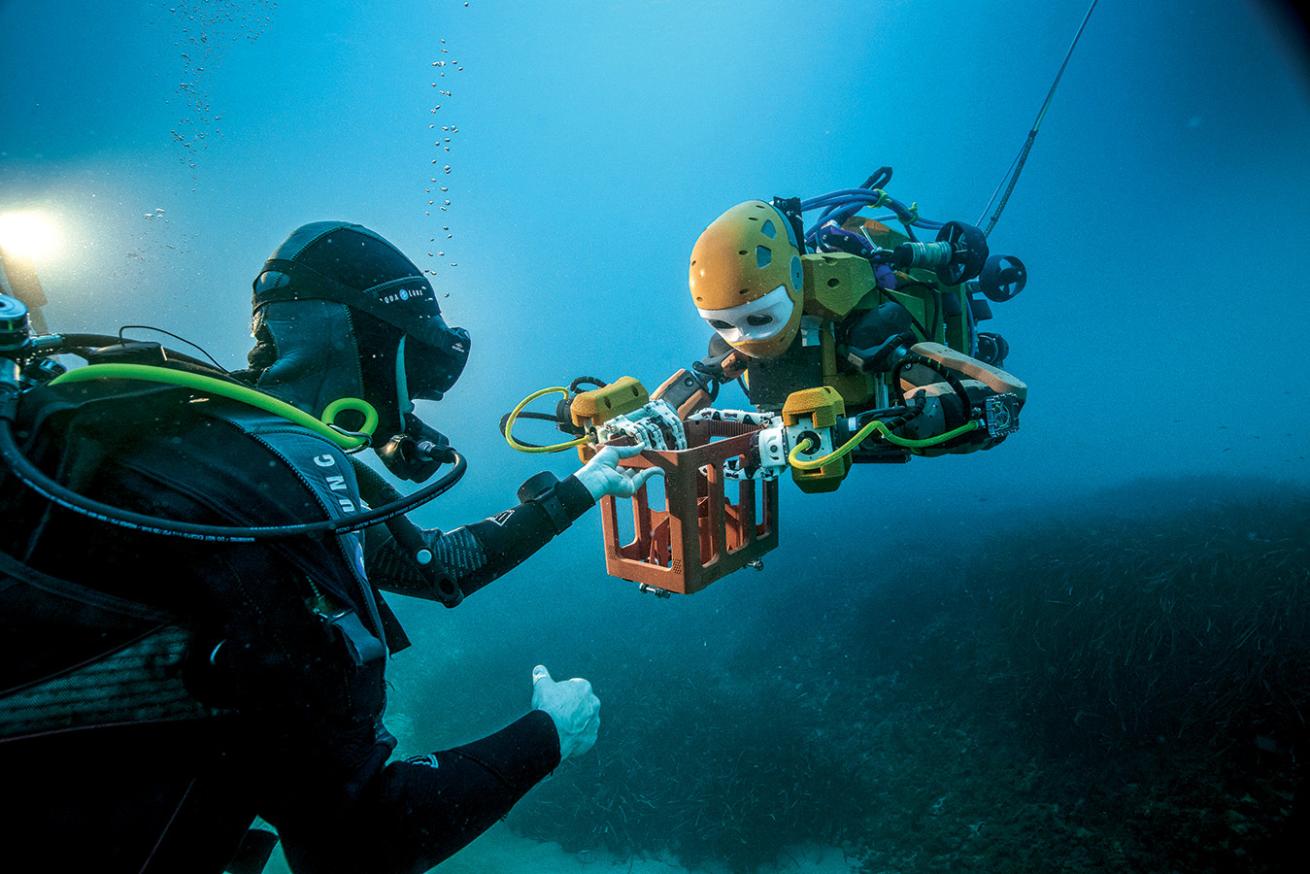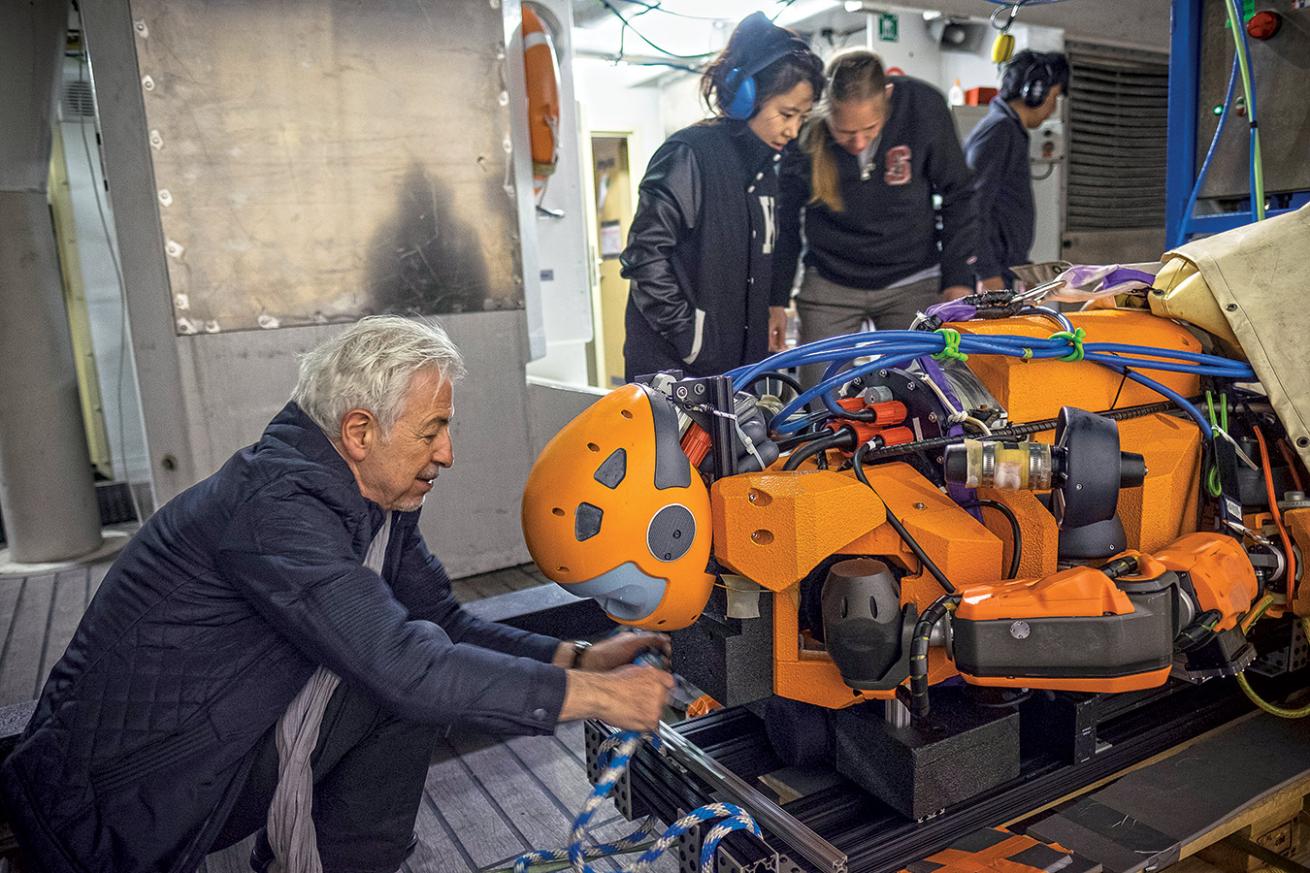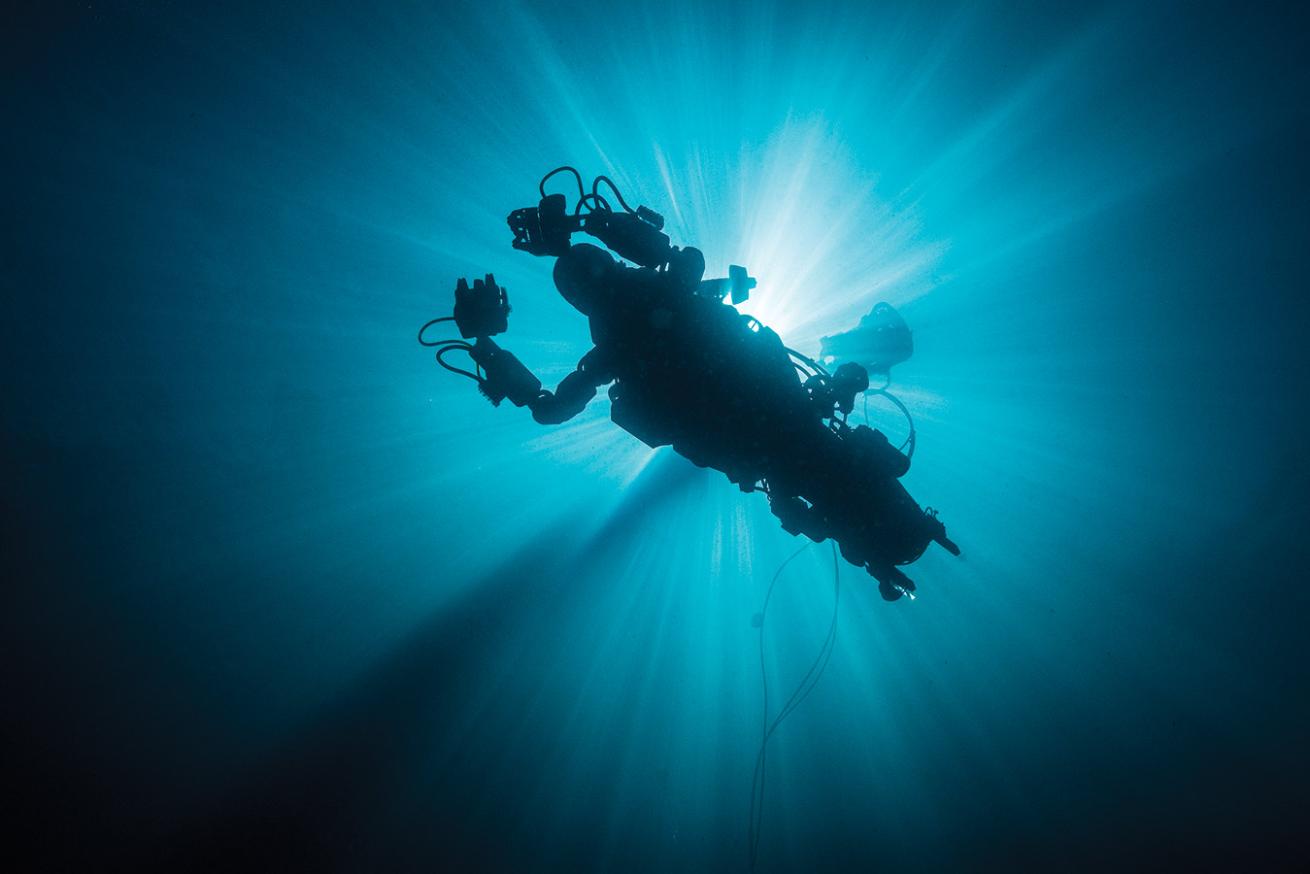Robotic Scuba Diver Created by Stanford to Explore Shipwrecks and Coral Reefs
Meet OceanOne, the humanoid scuba diver that’s launched underwater robotics to new heights — or rather, new depths. The 5-foot-long robot is an artificially intelligent avatar for underwater archaeologists, allowing them to explore thousands of feet below the surface without ever getting wet. Created by Stanford University science professor Oussama Khatib, the “robo mermaid” is equipped with two fully articulated arms and stereoscopic vision that allows the pilot to see everything it sees. But it’s OceanOne’s hands that make it truly revolutionary.
“The most amazing thing about it is that you can feel what the robot is doing while you’re up on the boat,” Khatib says. “It’s almost like you are there. With the sense of touch, you are creating a new dimension of perception.”
OceanOne’s hands are fitted with force sensors that provide a sense of touch by sending haptic feedback to the operator’s joysticks in the form of forces, vibrations and motions.
“Our robot comes with bimanual-manipulation capabilities,” Khatib explains. “Almost like a human diver being there and able to grasp an object to connect, disconnect, repair, maintain — to do things almost autonomously.”

Osada/Seguin/DrassmOceanOne — nicknamed the “robo mermaid” — performs like a human diver. The robot is controlled via joysticks.
Khatib has worked for two decades developing underwater autonomous vehicles (UAVs); he and his team at Stanford originally developed OceanOne to study deep Red Sea coral reefs. No human divers could safely survey the reefs at depth, and no existing robotic submarines operated with enough delicacy.
“Our solution was to physically extract the human from a dangerous area, but connect that person to the robot in an intuitive and meaningful way. The human provides the expertise and the cognitive abilities to the robot, bringing together this amazing synergy,” says Khatib.
OceanOne also benefits from a concept Khatib developed called artificial potential field. In layman’s terms, it helps the humanoid’s real-time collision avoidance.
“It’s sort of like a magnet: If you put magnets north to north, they repel. We artificially create this through our repulsive potential energy,” Khatib explains. “The arms prevent things from hitting the body of the robot.”

Osada/Seguin/DrassmThe Stanford team that built OceanOne designed it for studying deep-water sites that are beyond what humans can dive safely.
Operated by Khatib and a team of engineers and deep-sea archaeologists, OceanOne completed its maiden voyage this past April. Descending more than 300 feet below the surface of the Mediterranean Sea, the robot became the first to explore the 17th century La Lune shipwreck.
Despite its discovery more than 20 years ago, La Lune had remained untouched since it sank in 1664 some 20 miles off the southern coast of France. Using its state-of-the-art sensory receptors, Ocean-One deftly recovered the first artifact from the ship: a melon-size vase.
To prepare for potentially hostile and changing environments, Khatib and his team made sure experts could intervene at a moment’s notice. That’s where the UAV’s sensors and haptic feedback came into play.
“The first day we were on-site, OceanOne’s left arm got caught under a cannon. That’s the end of the robot if you break it,” says Khatib. “I managed to get the robot to do pushups. By pushing the haptic device with the hands in the proper direction, it stood up and freed itself.”
Underwater Drones You Can Buy

Osada/Seguin/DrassmOceanOne is a human-like robot that can scuba dive hundreds of feet underwater.










